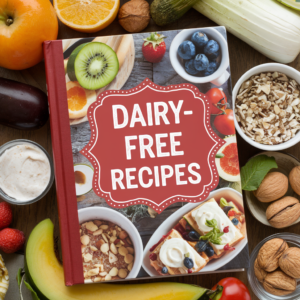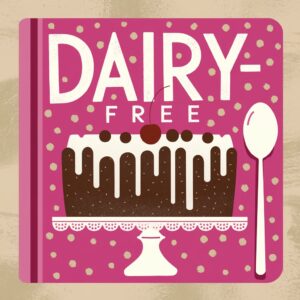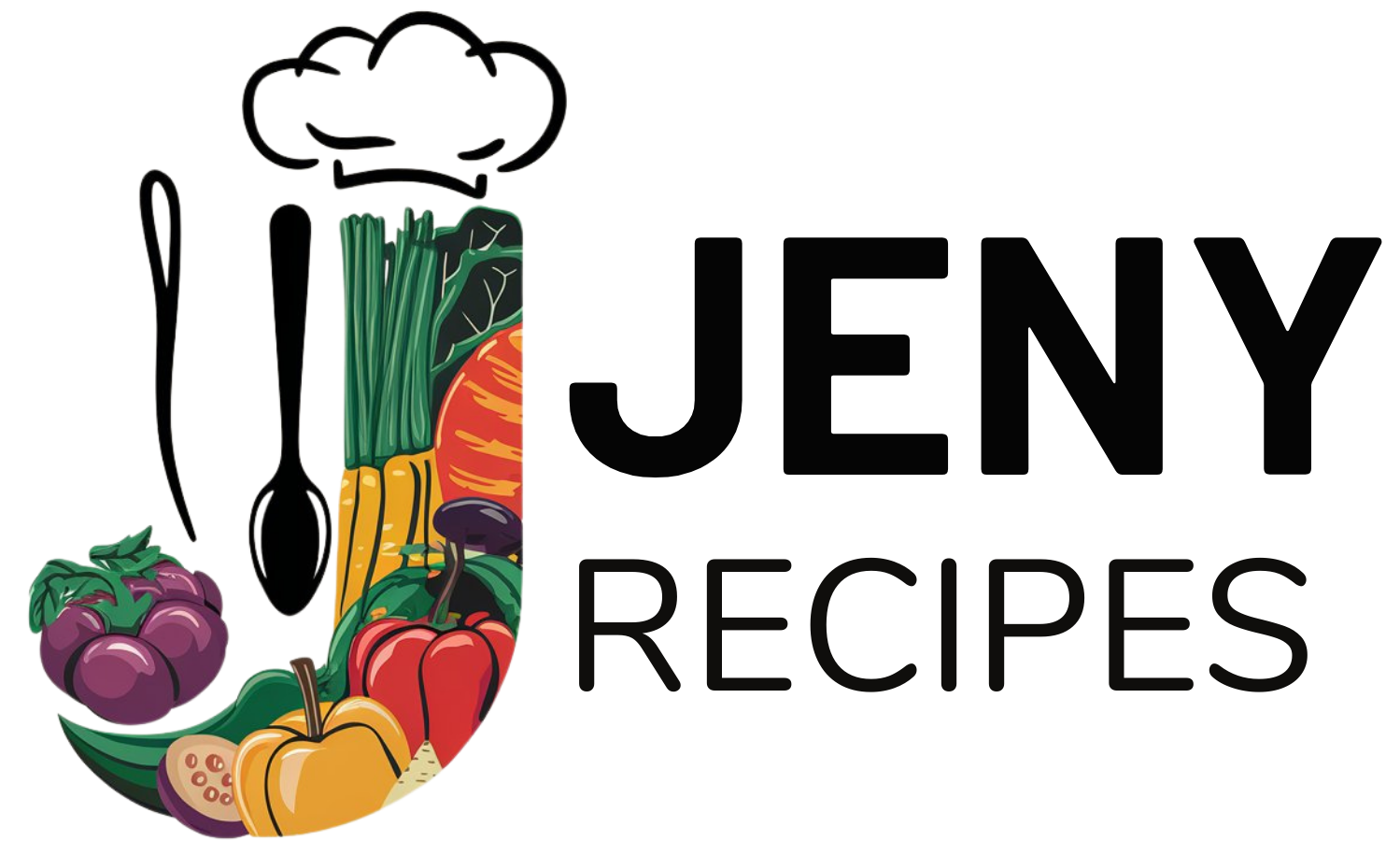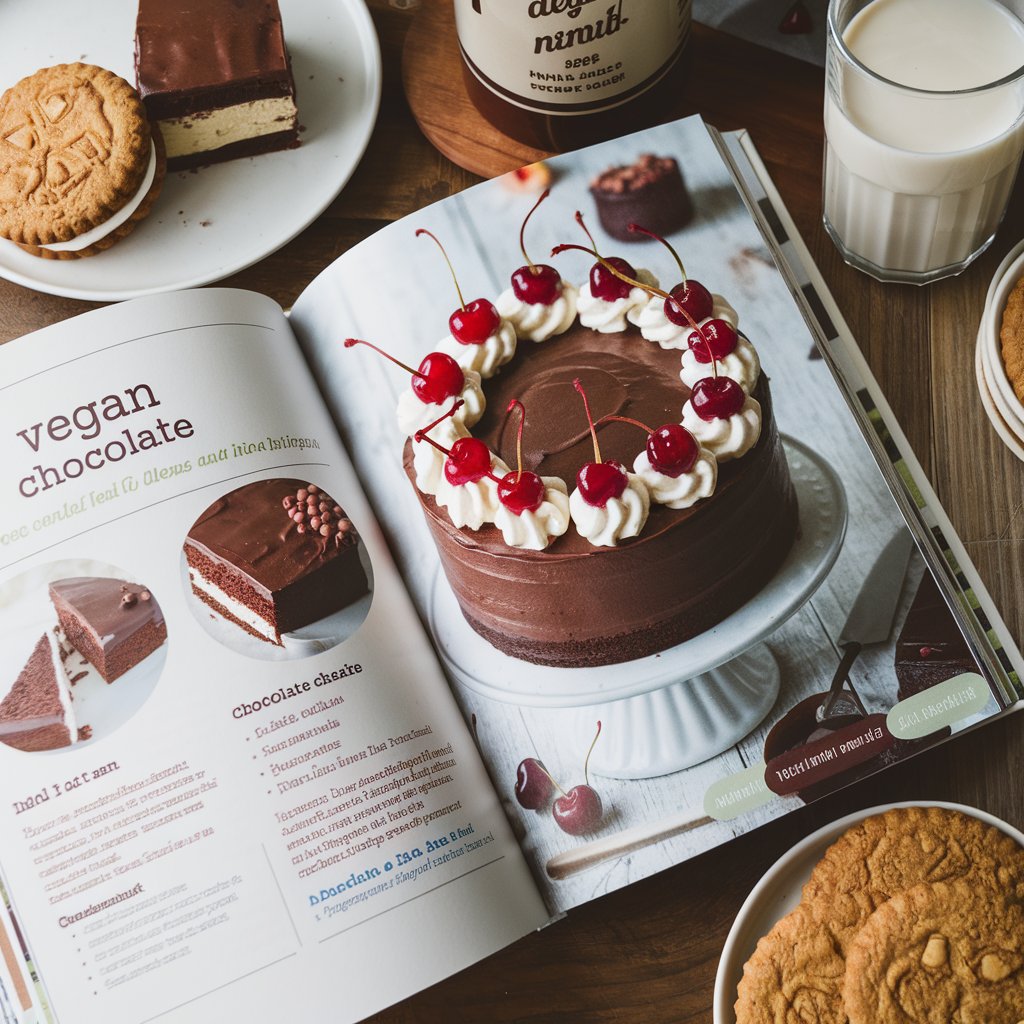
In a world where dietary preferences are as diverse as our food choices, a dairy free recipe book offers a tantalizing gateway to culinary creativity. Whether you’re lactose-intolerant, vegan, or simply looking to explore new flavors, these recipes empower you to enjoy delectable dishes without missing out on rich taste or texture. Imagine indulging in creamy sauces made from cashews, or dairy-free desserts that satisfy your sweet tooth using coconut cream or almond milk!
Each recipe can be adapted to suit your personal taste, allowing for endless variations with herbs, spices, and other ingredients. Our guide is packed with expert tips—from achieving the perfect cheese substitute to mastering the art of dairy-free baking—ensuring you’ll get the best results every time. So, if you’re ready to dive into the world of non-dairy cooking, grab your apron and let’s transform simple ingredients into mouthwatering masterpieces!
Ingredients for Dairy-Free Recipe Book:
Creating delicious dishes that are free from dairy doesn’t mean you have to compromise on flavor or texture. Below is a carefully curated list of ingredients to make a mouth-watering recipe that serves 8–10 people. Feel free to explore various alternatives and additions for a personalized touch!
Base Ingredients:
- 2 cups of gluten-free all-purpose flour
- 1 cup of unsweetened almond milk (or any plant-based milk such as oat or coconut milk)
- 1/2 cup of coconut oil, melted (or you can use avocado oil for a lighter flavor)
- 3/4 cup of maple syrup (or agave nectar for a lower glycemic index alternative)
- 1 tablespoon of apple cider vinegar
Binding Ingredients:
- 1/4 cup of ground chia seeds (mixed with 3/4 cup of water to create a gel for egg replacement)
- 1 teaspoon of vanilla extract
Flavoring Ingredients:
- 1 teaspoon of baking soda
- 1 teaspoon of baking powder
- 1/2 teaspoon of salt
- 1 teaspoon of cinnamon (optional, for a hint of warmth)
Mix-Ins (Optional):
- 1 cup of dairy-free chocolate chips (or dried cranberries for a fruity flavor)
- 1/2 cup of chopped nuts (such as walnuts or pecans for crunch)
- 1/2 cup of shredded coconut (for added texture and a touch of sweetness)
Suggested Variations:
- For a spiced version, consider adding 1/2 teaspoon of ginger and 1/2 teaspoon of nutmeg.
- If you’d like to enhance the chocolaty taste, swap half the flour for cocoa powder.
- Add 1 cup of mashed bananas for natural sweetness and moisture.
This collection of ingredients ensures that your creation will be thoroughly enjoyed by all, even those who typically shy away from dairy. Dive into the world of dairy-free cooking with these flavorful components!
How to prepare dairy free recipe book:
Creating a dairy-free recipe book is an exciting journey that allows you to explore a variety of flavors while eliminating dairy products. Follow these updated steps for a streamlined process and innovative ideas.
Step 1: Gather a Variety of Recipes
Start by collecting numerous dairy-free recipes from reliable sources. Look for dishes across different meal categories, like appetizers, main courses, and desserts. Choose recipes that excite you and maintain a good balance of flavors.
Step 2: Organize by Categories
Organize your collected recipes into distinct categories. This structure helps readers easily navigate through your book. Use tags or headers like “Soups,” “Salads,” “Main Dishes,” and “Desserts” for clarity.
Step 3: Test Each Recipe
Before finalizing the recipes, test each one. Make adjustments as needed to ensure that every dish is both delicious and satisfying. Note any changes you make for clarity and consistency.
Step 4: Write Clear Instructions
Draft each recipe using clear and concise language. Begin with the list of ingredients and follow with step-by-step cooking instructions. Ensure each step is easy to understand and follow.
Step 5: Add Cooking Tips
Include tips that can enhance the cooking experience. These can be about ingredient substitutions, cooking techniques, or storage tips. Your insights will provide additional value to readers.
Step 6: Choose an Appealing Format
Select a user-friendly format for your recipe book. Whether you opt for digital or printed versions, ensure the design is visually appealing. Utilize space effectively to make recipes easy to read.
Step 7: Incorporate Visuals
Add vibrant pictures to your recipe book. High-quality images of the final dishes can entice readers and offer inspiration. Capture the essence of each recipe visually.
Step 8: Create an Index
Draft an index at the end of your recipe book. This feature allows readers to easily find their favorite dishes and enhances the overall usability of your book.
Step 9: Final Review
Conduct a final review of your dairy-free recipe book. Check for clarity, grammatical mistakes, and formatting consistency. Make sure your book is polished and ready for readers.
Step 10: Publish and Share
Finally, publish your book in your chosen format. Share it with friends, family, and online communities. Promote your creation through social media platforms for wider reach.
Tips for the Perfect Dairy Free Recipe Book
Choose Quality Ingredients
Using high-quality ingredients sets the tone for the whole book. Explore local farmers’ markets for fresh produce. Organic fruits and vegetables often taste better and contain fewer chemicals compared to their conventional counterparts. Look for store-bought dairy-free alternatives that don’t contain artificial additives. Brands that focus on natural processes typically yield better flavors and textures.
Maintain the Right Temperature
Temperature plays a significant role in cooking, especially when it involves dairy substitutes. For example, when working with dairy-free butter, ensure it’s at room temperature for easy creaming with sugars. If you need to melt certain substitutes, use low heat to avoid compromising their texture. This attention to temperature helps achieve creamy and rich outcomes, even without traditional dairy products.
Consider Substitutions for Dietary Restrictions
Some individuals may have specific dietary restrictions beyond dairy. For example, if you are crafting recipes for nut-free eaters, consider using seeds like sunflower or pumpkin instead of almond milk. Having a variety of substitutes on hand lets you adjust recipes for anyone who opens your book.
Coconut milk provides a rich texture for soups and smoothies, while oat milk stands as a great pancake alternative. Stock up on a range of these choices to cater to diverse needs.
Experiment with Flavorings and Textures
Dairy-free cooking often hinges on finding the right flavorings and textures. Nutritional yeast adds a cheesy, umami flavor to many dishes. Using lemon juice or vinegar can achieve tanginess, emulating what dairy often provides. Silken tofu is perfect for creamy soups and dressings. Explore these varied ingredients to replace the creamy, rich notes found in traditional recipes.
Keep it Simple and Accessible
Always prioritize simple recipes that anyone can tackle. Use everyday language and straightforward instructions that guide readers through the process. Avoid overly complicated methods that may deter novice cooks. Including some quick tips and shortcuts at the end of each recipe can foster convenience in the kitchen.
Experiment with these strategies to make your recipes not only delicious but also approachable for anyone looking to enjoy dairy-free cooking.
Storage Tips for dairy free recipe book:
Proper storage of ingredients and dishes is essential to maintain freshness and flavor. Following these tips helps ensure your recipes remain delicious and safe to eat.
Maintain Optimal Storage Conditions
Store dairy-free ingredients such as nut milks, tofu, and plant-based cheeses in the refrigerator. Keep the temperature below 40°F (4°C) to inhibit bacterial growth. Seal containers tightly to prevent contamination and keep odors from other foods at bay.
Know Shelf Life of Ingredients
Understanding the shelf life of your ingredients is crucial. Check expiration dates on packaged items. Generally, opened plant-based milks last about 7-10 days in the fridge, while unopened containers can stay fresh for a month or two. Store tofu in water and change it every few days if kept in the fridge, extending its freshness.
It’s All About the Freezer
Freezing foods helps extend their shelf life significantly. Store leftovers or prepared dishes in airtight containers or freezer-safe bags. Label each item with a date to keep track. Most dairy-free dishes will last about 2-3 months in the freezer. To reheat, defrost in the refrigerator overnight and warm gently on the stovetop or in the microwave to retain texture and flavor.
Proper Storage of Fresh Produce
Fruits and vegetables require specific storage conditions to stay fresh. Store leafy greens in a breathable bag in the fridge. Root vegetables like potatoes and carrots fare better in a cool, dark place. Keep berries in their original packaging to prevent moisture buildup and spoilage. Check produce regularly, consuming or discarding any items that show signs of decay.
Avoid Cross-Contamination
Ensure that you store all prepared foods separately from raw ingredients. Use different containers to avoid cross-contamination. Always wash your hands before handling food to keep everything sanitary. Maintaining cleanliness in your storage areas prevents unwanted bacteria from affecting your dishes.
Remember, effective storage practices not only enhance the longevity of your ingredients but also ensure your dairy-free meals taste fresh every time you serve them.
Related Recipes to Enhance Your Dairy-Free Cooking Experience
If you are exploring the world of dairy-free cooking, consider these related recipes that complement those found in a dairy-free recipe book. These dishes not only maintain a similar flavor profile but also share nutritional benefits, making them excellent additions to your meal repertoire.
First, try your hand at coconut-based curries. These recipes use coconut milk as a creamy substitute for dairy, providing richness without lactose. The blend of spices combined with the natural sweetness of coconut creates a satisfying dish. Pair it with some quinoa or brown rice for a well-balanced meal.
Next, consider exploring cashew cheese sauces. Cashews blended with nutritional yeast, garlic, and lemon create a delicious cheesy flavor that rivals traditional dairy sauces. Use this sauce over pasta or as a dip for vegetables, allowing you to enjoy the creaminess without needing dairy.
For breakfast options, almond flour pancakes can be a delightful choice. They offer a fluffy texture and nutty flavor, perfect for any morning meal. Top them with fresh fruits or a drizzle of maple syrup for a wholesome start to your day.
Finally, don’t overlook the value of smoothies using plant-based milk. These quick blends can incorporate fruits, vegetables, and protein sources like chia seeds or hemp hearts, ensuring you receive a nutrient-packed drink.
Each of these recipes brings a unique twist to dairy-free cooking and highlights how substitutes can transform traditional favorites into delightful dishes.
Frequently Asked Questions:
What is a dairy-free recipe book?
A dairy-free recipe book is a collection of culinary instructions designed specifically for individuals seeking to eliminate dairy from their diets. These cookbooks often feature a variety of recipes, including appetizers, main courses, desserts, and snacks, that utilize alternative ingredients, enabling those with lactose intolerance, allergies, or lifestyle choices to enjoy delicious meals without compromising their dietary needs.
Who can benefit from using a dairy-free cookbook?
A dairy-free cookbook can be beneficial for a wide range of individuals. This includes those who have lactose intolerance, milk allergies, or specific dietary preferences such as veganism. People who experience digestive discomfort after consuming dairy or are looking to reduce their intake for health reasons will also find these resources incredibly useful, as they provide enjoyable and innovative alternatives.
Are the recipes in a dairy-free recipe book easy to follow?
Yes, most recipes in a dairy-free cookbook are designed to be accessible and easy to follow. Many authors aim to make cooking enjoyable for everyone, regardless of their skill level. This often involves clear instructions, accessible ingredients, and straightforward techniques that make it simple for both novice cooks and seasoned chefs to create delectable dairy-free dishes.
Can I find desserts in a dairy-free recipe book?
Absolutely! Many dairy-free cookbooks include a variety of dessert recipes that do not rely on dairy products. From rich chocolate cakes and creamy ice creams made with coconut or nut milk to scrumptious cookies and pies, these cookbooks offer a delightful assortment of sweet treats to satisfy any craving.
Where can I find a reliable dairy-free recipe book?
You can find reputable dairy-free cookbooks at local bookstores, online retailers, or even in your local library. Additionally, many food blogs and websites offer free recipes that may inspire you to go dairy-free. Look for cookbooks with positive reviews, as well as those authored by chefs or nutritionists who specialize in dairy-free cuisine, ensuring you have quality resources at your fingertips.
How can I adapt traditional recipes to be dairy-free?
Adapting traditional recipes to be dairy-free often involves substituting dairy ingredients with appropriate alternatives. For instance, when a recipe calls for milk, you might use almond, coconut, or oat milk. Similarly, butter can often be replaced with coconut oil or a dairy-free margarine. Experimenting with these alternatives can yield delicious results while preserving the essence of the original dish.
In conclusion, this dairy free recipe book empowers you to create a wide range of delicious meals that cater to your dietary needs. With its focus on simplicity, each recipe is designed for easy preparation, making it perfect for busy lifestyles. The flexible approach allows you to mix and match ingredients, ensuring you can adapt each dish according to your preferences and what you have on hand. Customization options, such as swapping out proteins or adding seasonal vegetables, provide an opportunity for creativity in the kitchen. Embrace the versatility of dairy-free cooking with this collection, and discover how straightforward it can be to enjoy nourishing, flavorful meals that everyone will love. Whether you’re a seasoned cook or a beginner, the recipes in this dairy free recipe book will inspire you to explore new culinary horizons.

